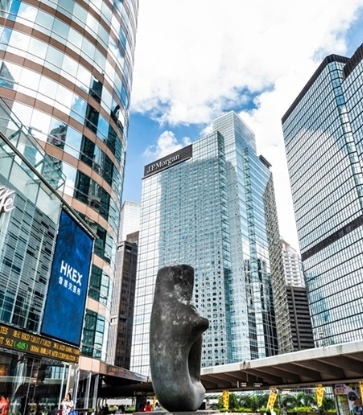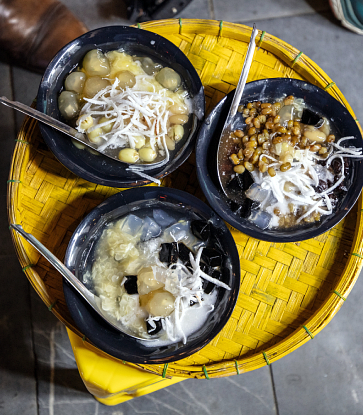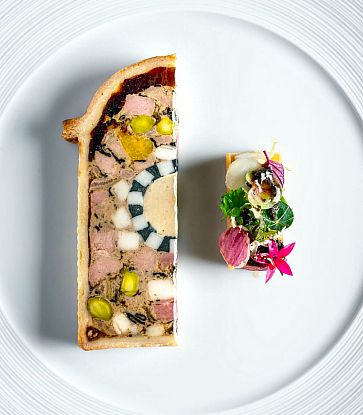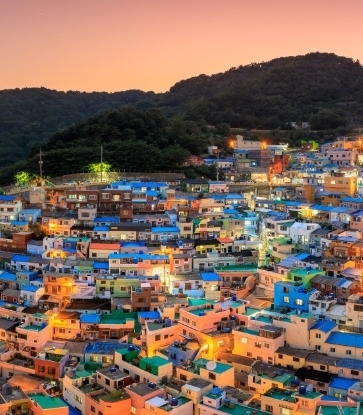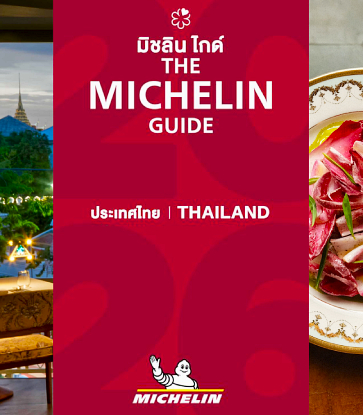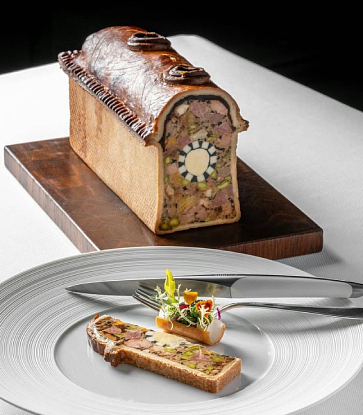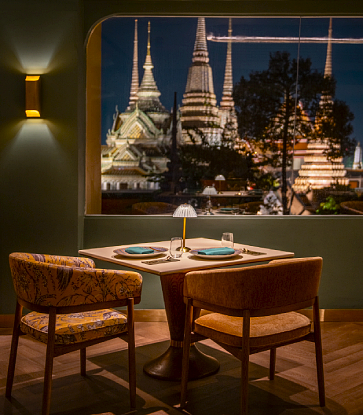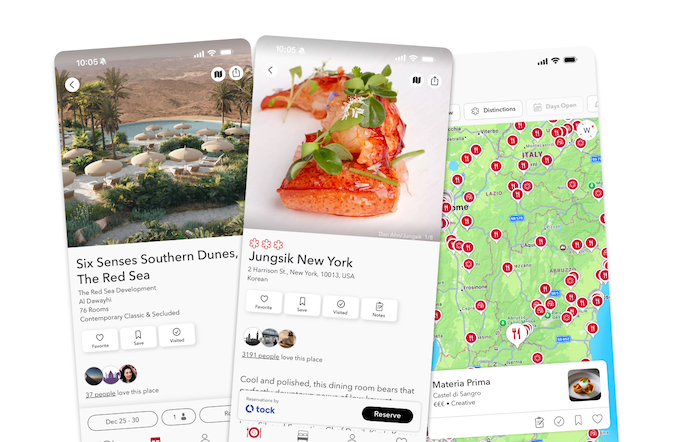Myojaku takes its name from philosopher Yusuke Yamaguchi’s concept of akarusabi — an aesthetic in which radiance resides in restraint. First appearing in the MICHELIN Guide Tokyo 2023 with Two MICHELIN Stars, it has swiftly ascended to the pinnacle, earning Three MICHELIN Stars in 2026. Here, the MICHELIN Inspectors reflect on the restaurant’s rapid rise and the vision of its chef, Hidetoshi Nakamura.
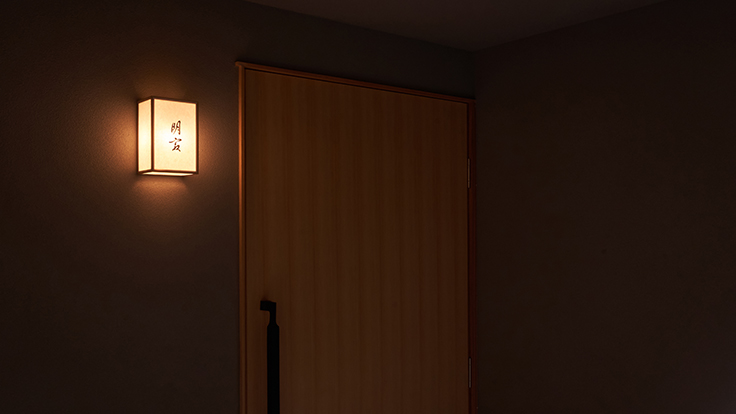
Arrival: First impressions of space and hospitality
Descending the quiet staircase past Myojaku’s discreet sign, guests are greeted by a lantern inscribed with the restaurant’s name, brush-stroked by calligrapher Mikiko Kayama. Inside, Kyoto architects have created a traditional sukiya-style interior with a single-slab wooden counter and generously spaced leather chairs. On the earthen wall hangs a solitary flower, recalling the story of Sen no Rikyū’s Morning Glory tea gathering, embodying a pared-back elegance. The simple aesthetic keeps the focus on the food, and the atmosphere is poised and serene. Every element — architecture, vessels, cuisine and hospitality — is infused with quiet spirit. The evening begins with Nakamura greeting each guest with the ethos of ichigo ichie, a once-in-a-lifetime encounter, before his team carries this spirit of hospitality throughout the meal.RELATED: What is a Michelin Star?
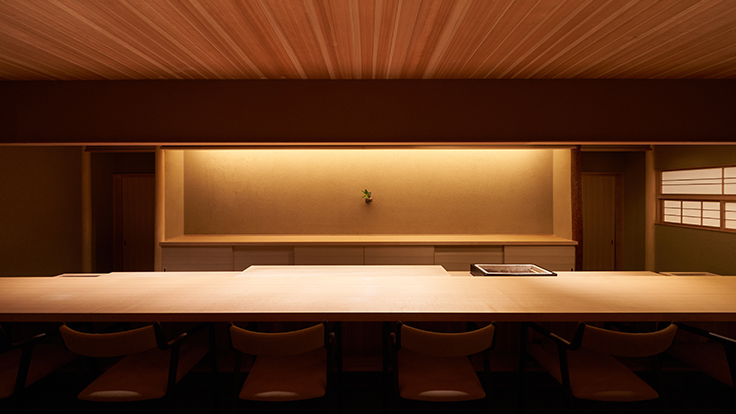
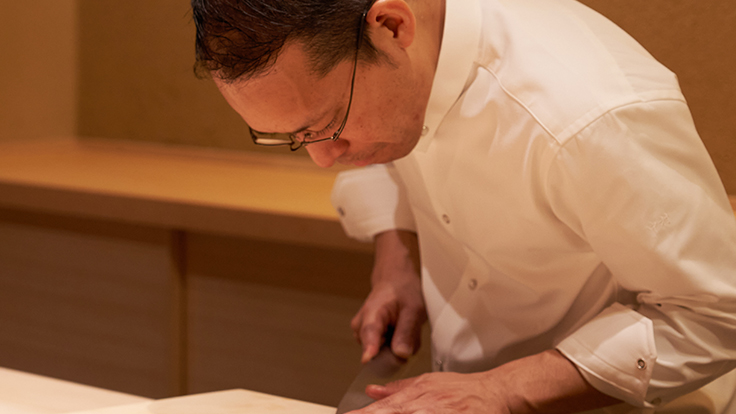
The dishes
What is valued most in the cuisine here is harmony, lightness and purity. The ingredients are nurtured by Japan’s forests, rivers and seas, and expressed through balance, delicate flavors and the clarity of pure water. Central to this is the use of deep-sea spring water drawn from Miyazu Bay in Kyoto, in which the ingredients are cooked. For Nakamura, this principle extends beyond taste, to honor nature’s order and show respect to the guest.Daikon simmered in seawater
The meal begins with a simple preparation of vegetables. In the bowl, wedges of daikon swim in a clear cooking broth. The salt in the seawater draws out the natural sweetness of the radish. Humble yet pure in its presentation, the dish leaves a striking impression.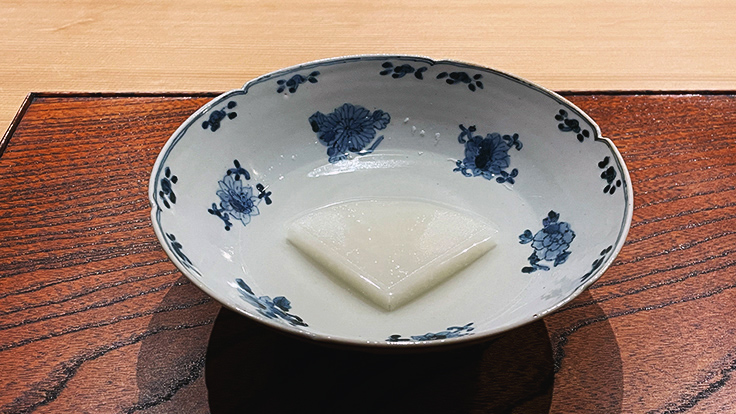
Sea bream and bigfin reef squid sashimi
Akashi sea bream is thinly sliced and served with soy seasoned by its own dashi. Bigfin reef squid, finely scored, is paired with salt mixed with powdered squid. By presenting two ingredients through contrasting preparations, their natural flavors circulate and converge on the palate. Knife technique and creative thinking are evident throughout.
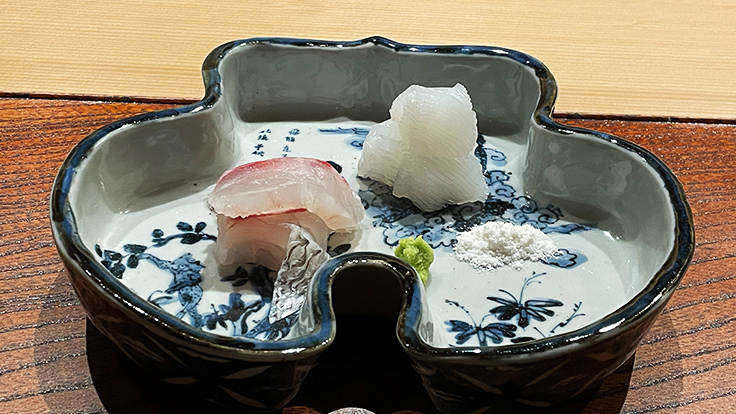
Shellfish clear soup
This seasonal soup signals the arrival of spring. Clam and shijimi tofu form the centerpiece, with white abalone mushroom garnish fashioned to resemble an elegant shell. In the black lacquer bowl, the pure white broth glows, its umami drawn solely from seawater and shellfish. In this course, the purity of water and ingredients takes precedence, never masked by kelp or bonito.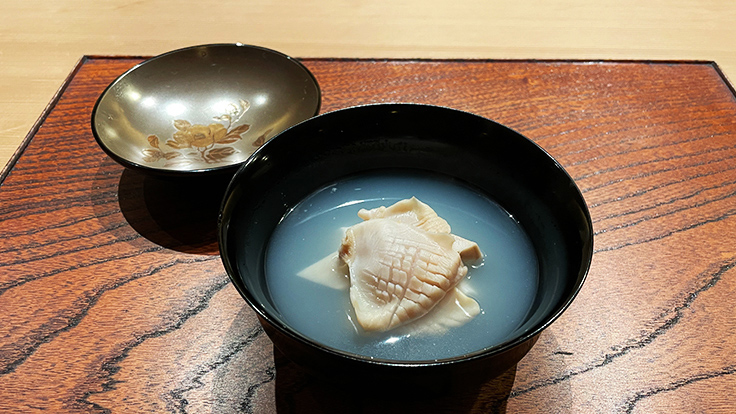
Pond smelt (wakasagi) wilk-wrapped sushi
This kinumaki-zushi (sushi rice and fish omelet) is a fixture of the menu. During the Inspectors visit, the fish used was pond smelt (wakasagi). The dish begins with a crepe-thin omelet, likened to silk, laid on the plate. To complement the sushi rice, the chef uses eggs from chickens raised on rice, whose yolks pale to the point of white, evoking the pure color of silk. The sushi rice and grilled pond smelt are then wrapped inside, resembling a sheet of washi paper. In Japanese tradition, washi and kaishi were used to wrap and protect what was most precious, and this cultural reference is carried within the dish.
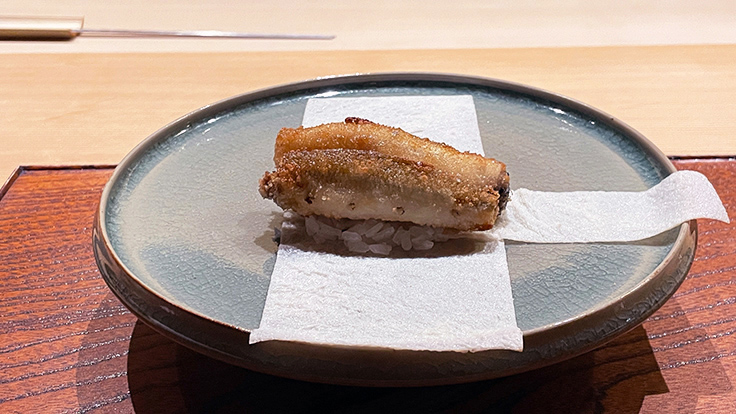
Shio soba
Named for the seawater in its broth, this “saltwater soba” begins with a sip of gently heated deep-sea spring water from Miyazu Bay, bursting with natural sweetness and umami. The soba itself is finely cut 100% buckwheat noodles. Dipped into the seawater broth, their aroma and flavor are elevated even further.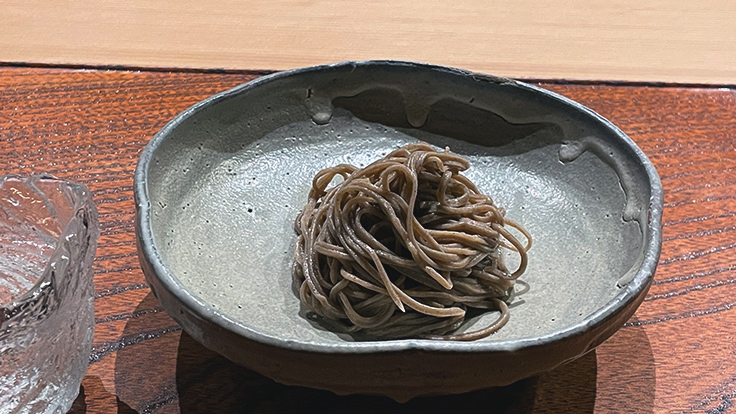
Conclusion
Nakamura constantly asks “why” and “how,” often seeking answers in nature. Visiting the regions where his ingredients are produced, he speaks of realizing how inseparable life is from water. Surrounded by the sea and blessed with satoyama woodlands, rivers, and fertile soil (the cultivated foothills between villages and mountains), Japan’s ingredients are bound together by the flow of water. These cycles, extending even to the sun and moon, inspire Myojaku’s cuisine.In Nakamura’s food, the richness of Japan’s water is ever present. The chef seeks to “leave a memory in the water,” evoking not only taste but also the colors of the sky and the scent of the wind,
Dining here inspires a sense of gratitude — for nature, for life, for the fleeting moment. This is Japanese cuisine as Myojaku understands it — not only delicious, but an experience that awakens awareness of our place on this planet and our responsibility within it.
Top Image: © Myojaku




